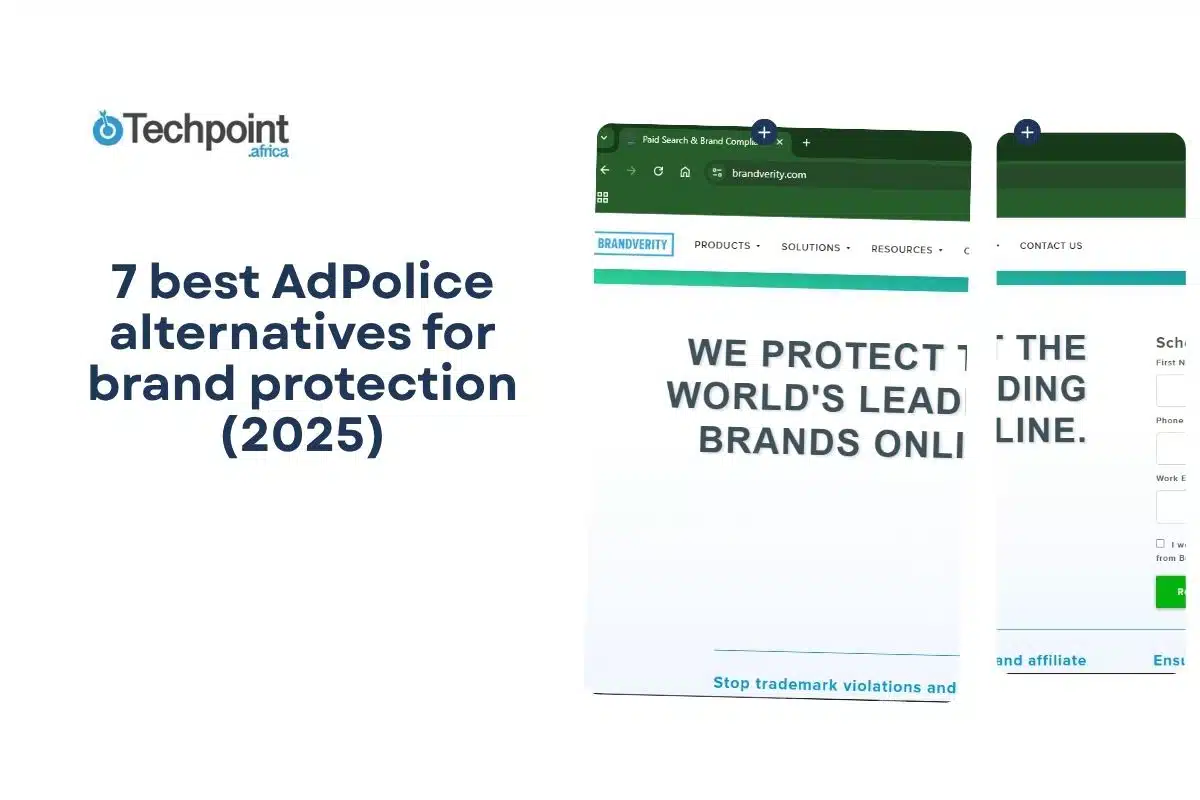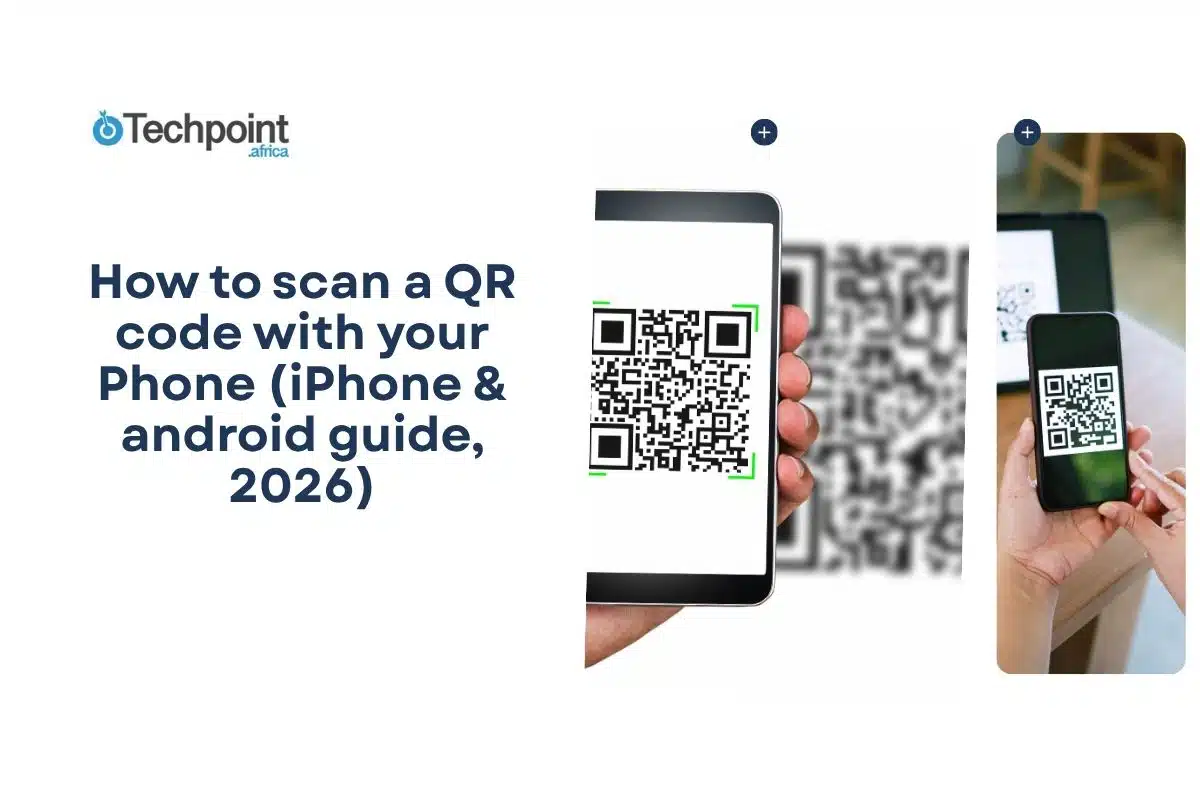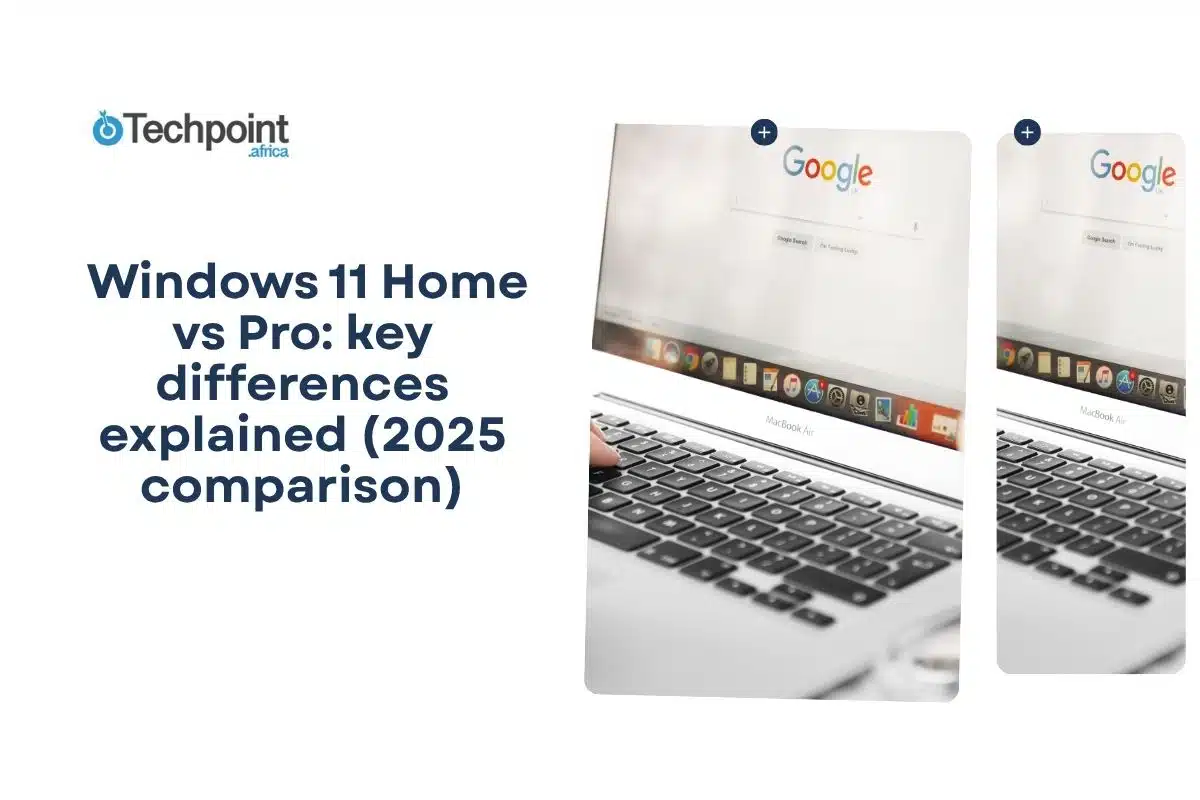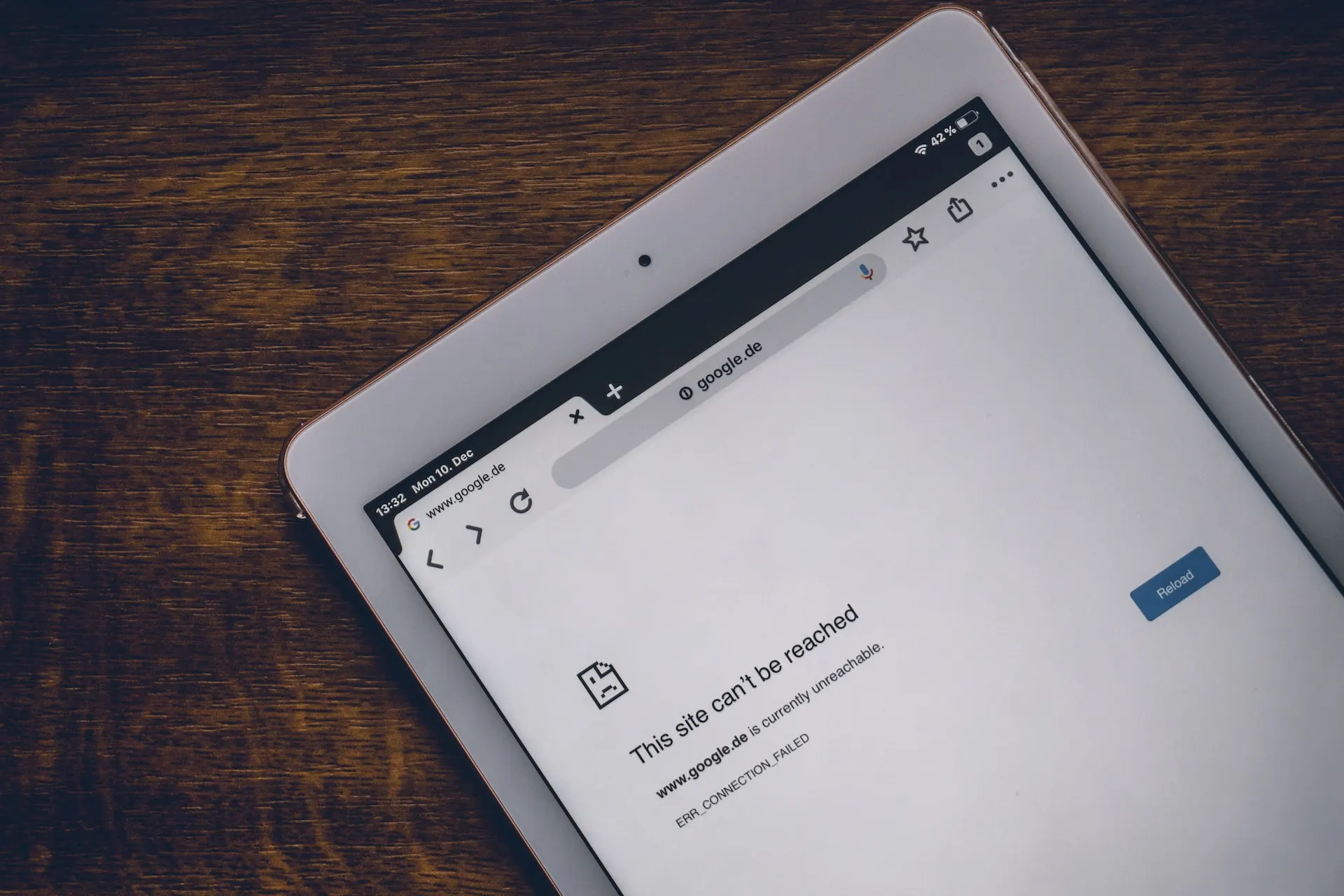
When I moved away from MyFitnessPal, I wanted more than a calorie log.
I needed faster logging, trustworthy data, and more precise feedback indicating my plan worked. I’ve tested 7 solid alternatives across iOS and Android, paying attention to speed (how many taps per meal), database accuracy, barcode reliability, recipe handling, micronutrient depth, and how well each app adapts to real-world dieting can-not-do-away-froms like eating out or changing routines.
I also checked community feedback on app stores and official help pages to validate my observations from daily use. Below is my first-person account of each nutrition tracker, detailing what I could do, how quickly I could do it, and where the experience genuinely helped me stay motivated.
Let’s get into this!
Cronometer
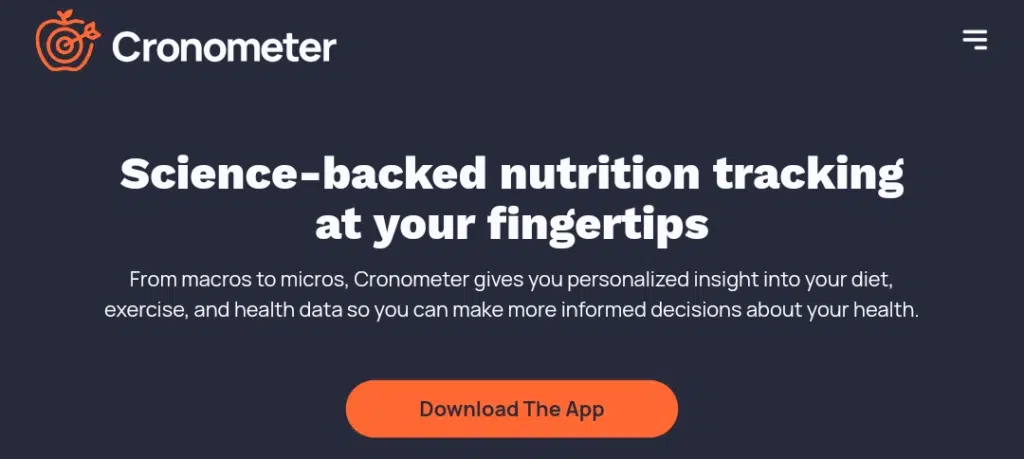
Cronometer performance
I could log a full day in under five minutes, and what stood out was the depth of micronutrients. It has vitamins and minerals auto-populated for most foods, so I wasn’t guessing about potassium, iron, or omega-3s. Barcode scanning was reliable, and entries were sourced from lab-analyzed or verified sources, ensuring consistent totals across days.
The dashboard reminded me when I was light on specific nutrients, and exercise and biometrics synced cleanly. The absolute result was I didn’t just “hit calories” but balanced nutrients without extra spreadsheets. If you care about accuracy beyond macros, Cronometer made it transparent and speedy.
What I loved
- Firstly, I was assured by the sheer breadth of nutrient tracking, which backs 84 micronutrients, a feat that is hard to believe, but Cronometer substantiates this on its site.
- Creating custom meals and recipes reduced my logging time, aligning with what the “Meals & Recipes” feature promises.
I appreciate the flexibility to choose data sources (e.g., USDA-labeled foods) to ensure accuracy.
- The seamless device syncing (Fitbit, Garmin, Apple Health) meant I didn’t manually enter my workouts.
What displeased me and could be improved
- For someone who, like me, enjoys simplicity, the interface feels overwhelmingly detailed; the site’s dedication to scientific depth means a steeper learning curve.
- Nearly every feature, including fasting timers, macro schedulers, and recipe importers, is labeled as premium-only (“Gold”), so some abilities I’d access for free in other apps require paying.
Pricing
- The Basic version is completely free, including tracking calories and up to 84 nutrients, a barcode scanner, custom meal planning, charts, and syncing with devices.
- Cronometer Gold (premium) offers ad-free usage, a free timer, a meal scheduler, recipe importer, time stamps, custom charts, and more.
- Cronometer Gold is $10.99 per month or $59.99/year (just under $5/month).
Lose It!
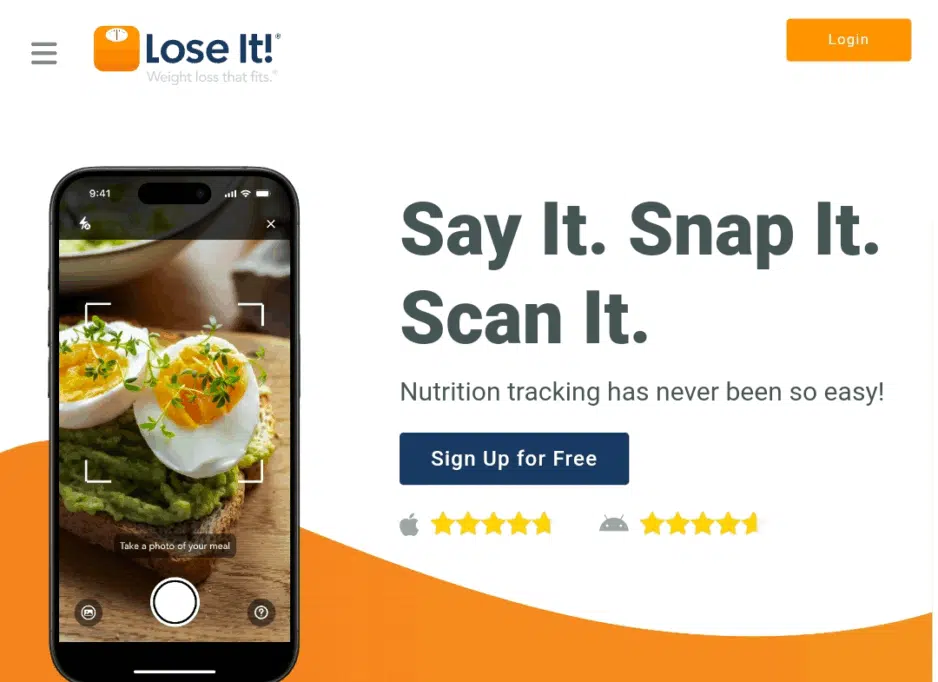
Lose It! performance.
I logged meals fastest here. Voice and photo logging let me capture breakfast in seconds, and the barcode scanner recognized most packaged items on the first try. For typical weight-loss tracking (daily calories, macros, weigh-ins), Lose It! felt effortless, especially on busy weekdays.
The camera/AI features eliminated the restriction on the one-way option when I didn’t want to type, and the database returned sensible portion defaults. I still double-checked complex recipes, but day-to-day logging (such as sandwiches, snacks, and coffee drinks) was almost automatic. This was the smoothest “open, log, close” flow if you value speed over granular micronutrients.
What I loved
- I genuinely found the Snap It and voice logging features speedy.
- Losing weight felt more achievable with a calorie budget tailored to my profile and activity level.
- The barcode scanner (available even in basic models) meant I rarely manually typed food details.
- I appreciated how the app accommodated various diet types (e.g., keto, vegan), as confirmed by the support documentation.
What displeased me and could be improved
- The free version felt limited: advanced tracking, fasting, AI logging, and meal planning are locked behind Premium.
- I noticed the web app is no longer updated or supported, making multi-platform use inconvenient.
Pricing
- Basic version (free) includes calorie tracking, weight plan, basic logging, and community features.
- Premium adds Snap It, AI voice logging, macro and advanced nutrient tracking, challenges, meal plans, diet templates, and integrations. It costs around $39.99 per year (or roughly $4/month).
Foodnoms
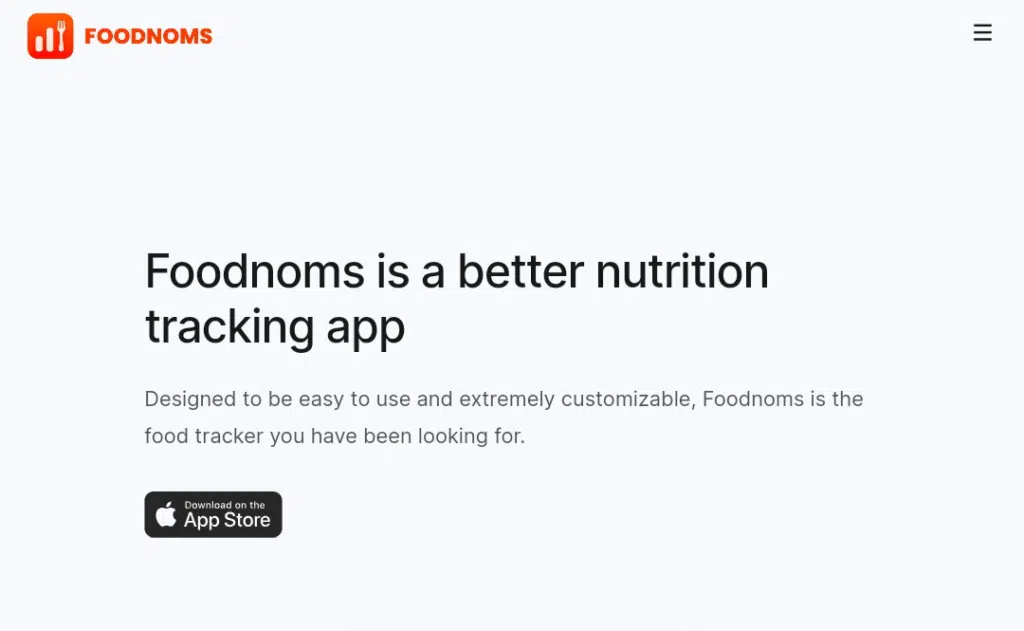
FoodNoms performance
When I started using FoodNoms, the logging flow felt beautifully simple because there were no ads or distractions; it was just a simple tap-and-enter food tracking process. The label scanner and AI-powered photo/description logging were helpful. I snapped my lunch on occasion, and within moments, the app suggested foods with reasonable accuracy. It’s Smart Suggestions intuitively guessed what I’d eat next based on time and past habits. Most of the time, I just tapped one suggestion and was done.
Apple Health syncing allowed workout calories and steps to adjust my budget automatically. The only dislike I observed was when I ate something very local or unusual; the suggestions occasionally missed the naming, so I’d type those entries manually. Overall, it felt like everyday work, but I’d have preferred not to.
What I loved
- I experienced the streamlined simplicity each day. I never encountered ads or clutter; it was just the clean tracking flow they promised.
- Logging felt effortless with the label scanner and even better using AI that interpreted my meals from photos or descriptions.
- I love the Smart Suggestions, which felt almost psychic, like it predicted what I’d log based on time and past habits.
- Apple Health syncing brought all my data together, which was especially useful when workouts adjusted my calorie goals.
What displeased me and could be improved
- I occasionally found the AI suggestions slightly off, especially when my meals were unconventional or heavily regional.
- Android users are out of luck since FoodNoms is only available on iOS, which isn’t ideal for cross-platform logging.
Pricing
- FoodNoms is free to use, and FoodNoms+ unlocks advanced features. Its subscription costs $5.99/month or $39.99/year, while the Family versions cost $9.99/month or $69.99/year.
Yazio
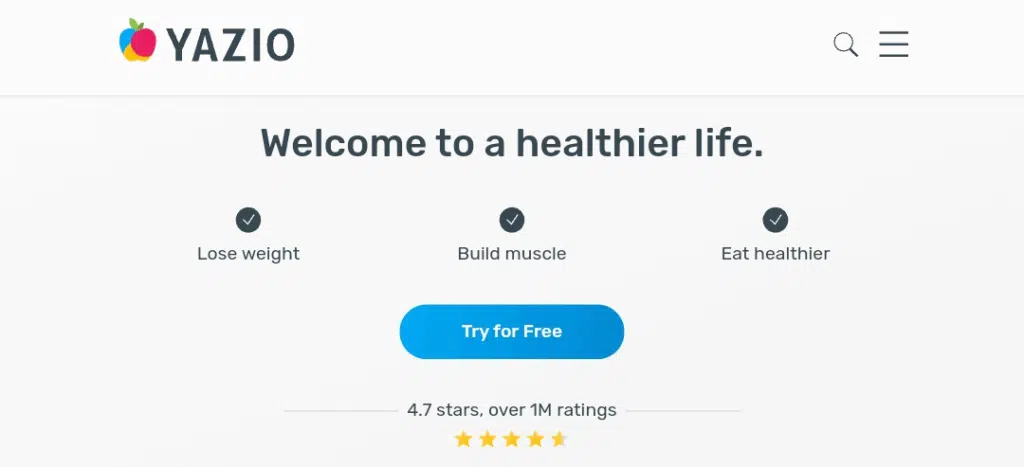
Yazio performance
Within a few days, I had a clear calorie budget, simple macro targets, and a diary view that made progress obvious. The dashboard tracked consumed vs. remaining calories and highlighted macros, water, and activity, which helped me course-correct at lunch instead of waiting until night. Barcode scanning and meal logging were straightforward; built-in programs didn’t get in the way when I wanted to track. For basic weight loss and habit consistency, I stayed on target without changing for more than a few minutes per day. It felt structured but light.
What I loved
- I loved the clean, friendly interface, and the diary clearly displayed my calorie, macro, and activity data.
- Fasting was flexible; 20 different fasting schedules, like 16:8, 5:2, etc., helped me experiment realistically.
- The fact that recipes were nutritionist-tested and easily filterable (vegetarian, low-carb) warmed me to the app.
What displeased me and could be improved
- Many features, such as recipe access, syncing with Fitbit/Garmin, advanced stats, etc., are only in the Pro version, which feels restrictive.
- The free version lacks some in-depth analysis, making long-term tracking less insightful.
Pricing
- Yazio offers a fully functional free version for basic tracking and fasting.
- The Yazio Pro premium tier unlocks advanced fasting, syncing, recipes, grocery lists, and deeper statistics.
- Yazio Pro costs approximately $13.49 (single purchase), $19.99 for three months, or $39.99/year, depending on the in-app promotion.
Fatsecret
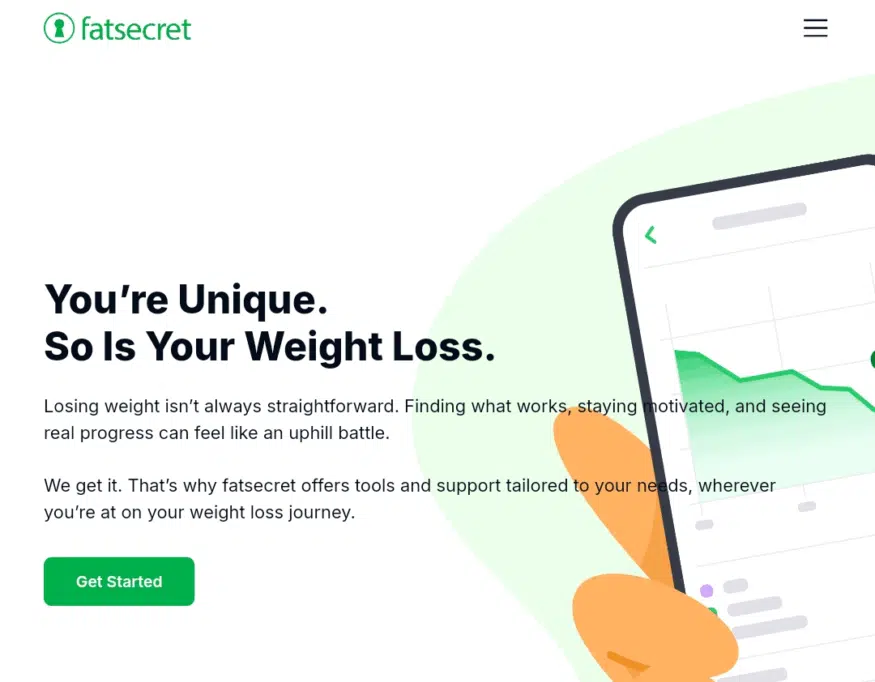
FatSecret performance
FatSecret impressed me with its free, full-calorie tracking and robust community support. I could scan barcodes or search entries quickly, and everything I logged had reliable macro and calorie details without a subscription. Jumping into forums or weight-loss groups added motivation: I often found tag-alongs, recipes, or encouragement when logging felt mundane. The interface wasn’t sleek, but it held up for rapid, no-glitch logging. What I missed was micronutrient depth since it had no vitamin breakdowns. I already figured out an alternative that gave, but that. Ultimately, if I wanted a lightweight but socially engaged tracker that keeps things simple and free, FatSecret would have my back.
What I loved
- I was impressed that barcode scanning and macro tracking are free; it’s rare for apps to offer that feature.
- The community support (forums, weight-loss groups, tips) made logging feel social and less solitary.
What displeased me and could be improved
- It felt less focused on micronutrient detail than apps like Cronometer, yet it works well for quick logging.
- The interface is utilitarian, less sleek than newer trackers, though functional.
Pricing
- All core functions are free, which is a huge plus.
But,
- FatSecret Premium (in-app upgrade) adds meal plans, water tracking, and bonus tools. It runs about $14.99/month, $28.99 quarterly, or $41.99–$59.99/year. Pricing varies by region and is displayed in the app.
Mynetdiary
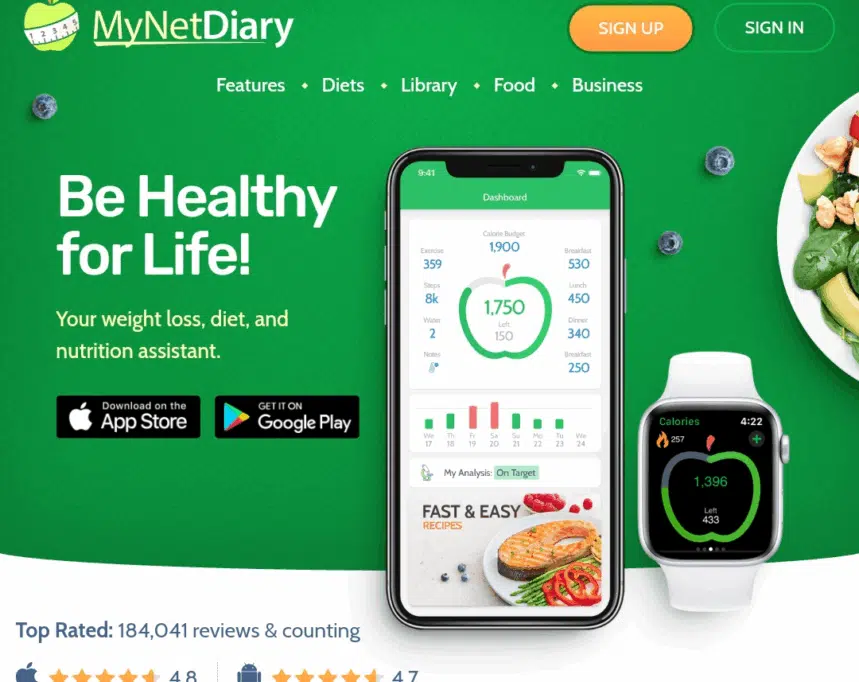
MyNetDiary performance
This one balanced speed and trust. I could scan, search, or use an AI meal scanner to quickly record typical meals, and the verified database reduced the “which entry is real?” guessing. The day timeline view helped me plan ahead, and logging dinner early kept me from overshooting later. I liked that accuracy extended beyond calories, with many foods carrying complete nutrient profiles, but it never felt heavy. If you want fast logging with strong data hygiene (and minimal ads or nagging), MyNetDiary delivers a low-pressure routine that still feels reliable for weekly trend tracking.
What I loved
- The AI Meal Scan, which identifies foods from my photos, made logging feel futuristic and fun.
- I love how MyNetDiary automatically adjusted my calorie budget when my weight fluctuated; that felt adaptive and intelligent.
- The sheer nutrient depth (up to 108 nutrients tracked with customizable dashboards) offered clarity and granularity.
- I could seamlessly log ahead, choose diets, and sync across devices.
What displeased me and could be improved
- AI Meal Scan is limited to Premium users, which disappointed me when I wanted quicker logging.
- The interface, although customizable, occasionally felt dense for casual users.
Pricing
- The free version includes food tracking, barcode scanning, planning, and basic dashboards.
- Premium unlocks AI Meal Scan, deep insights, advanced forecasting, and meal plans. Pricing details are available in-app.
- MyNetDiary Premium is around $59.99/year (or $8.99/month)
FitBee
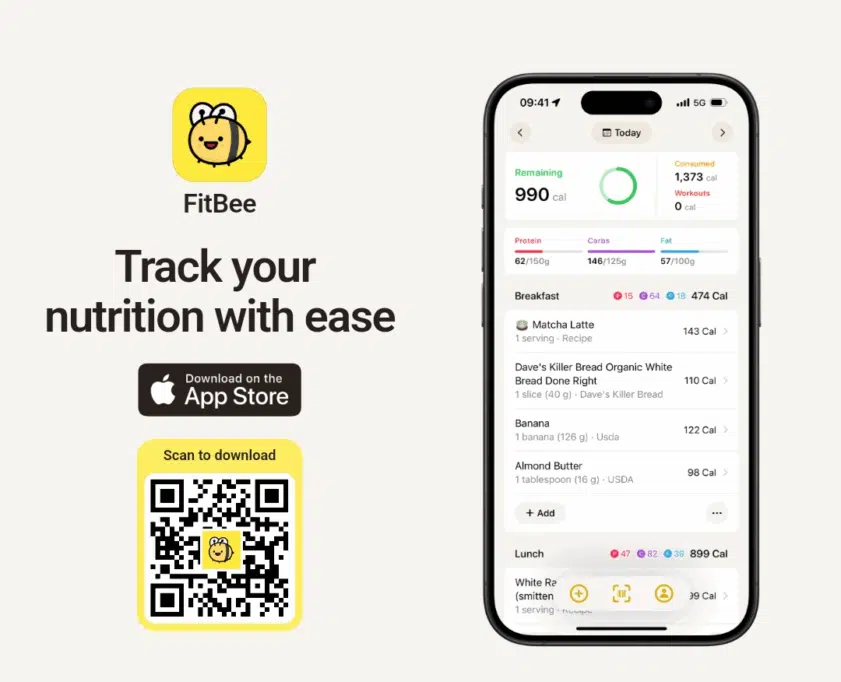
FitBee performance
FitBee never felt too boring on daily use. Typing or scanning a meal took only a few taps, and the ad-free interface with dark mode made late-night logging easier on the eyes. The home-screen widgets helped me glance at daily calories or macros without opening the app. Photo logging worked well for casual entries, like snapping, confirming, and moving on. It’s a newer, quieter app, so I didn’t find much in-app guidance or social features, but I loved how straightforward tracking became. When I was looking for a sleek, personal, distraction-free way to log calories and recipes (especially with a modern widget interface), FitBee made it faster and pleasant.
What I loved
- Logging is fast. The food search and entry took seconds due to their streamlined design.
- The app’s ad-free experience and clean interface kept focus on tracking, with no distractions.
- The home-screen widgets and dark mode gave it a refined, modern feel.
What displeased me and could be improved
- FitBee appears to be relatively new and has received limited reviews, which makes me cautious about its long-term reliability.
- I wish there were more diet templates or community integration; it’s mostly solo tracking now.
Pricing
- The free version includes barcode scanning, recipe creation/import, macros, widgets, and photo logging (limited).
- Premium enables unlimited photo logging, recipe import, and macro goals. In-app pricing varies.
I’ve pulled my experience into a quick comparison table to simplify the differences. It sums up barcode scanning reliability, how well each app calculates macros, the trustworthiness of their food databases, and even the average time it took me to log a meal. I also added a “Best For” column to see which app matches your goal.
| App | Barcode Scan Accuracy | Macro Calculation Precision | Database Verification | Time to Log Meal | Best For |
| Cronometer | 95% | Excellent | USDA / NCCDB verified | 3.2 minutes | Best for accuracy and micronutrient tracking |
| Lose It! | 85% | Good | Crowd-sourced + verified | 2.1 minutes | Best for speed and effortless daily logging |
| FoodNoms | N/A (visual) | Fair | Limited verification | 1.8 minutes | Best for privacy and minimal, distraction-free tracking |
| Yazio | 80% | Good | Mixed sources | 2.5 minutes | Best for structured fasting and nutritionist-tested recipes |
| FatSecret | 70% | Basic | Community-driven | 2.8 minutes | Best for free features and community support |
| MyNetDiary | 90% | Excellent | Verified database | 2.3 minutes | Best for balanced speed, verified data, and adaptive features |
| FitBee | 75% | Fair | Limited, newer database | 2.0 minutes | Best for sleek, ad-free, widget-based tracking |
So,
Testing all 7 MyFitnessPal alternatives gave me perspective on what really matters in tracking.
Cronometer assures unmatched accuracy with micronutrients, while Lose It! proved unbeatable for speed and everyday calorie logging. FoodNoms was amazing for its clean, ad-free design and respect for privacy, especially when paired with Apple Health. Yazio offered structure through fasting schedules and nutritionist-tested recipes, making it easy to stay consistent.
FatSecret was the most generous free option, with community support that kept me motivated. MyNetDiary impressed me with its verified data and adaptive features, and FitBee provided the sleekest, most distraction-free logging experience. Each app worked differently, so the “best” depends on whether you want accuracy, simplicity, guidance, or community.
So, what do you need? Answer that to choose a befitting nutritional tracker.
Frequently Asked Questions (FAQs) about MyFitnessPal alternatives
Q1: Which MyFitnessPal alternative is the most accurate?
- Based on my testing, the Cronometer was the most accurate. Its database is verified and tracks far more nutrients than the others. If precision matters, such as monitoring vitamins or adhering to a keto diet, Cronometer is unmatched.
Q2: Which app is easiest for beginners?
- Lose It! was the easiest to get started with. The setup took minutes, and the interface guided me through calorie budgets without overwhelming me. It felt like a great starting point for someone new to tracking.
Q3: Which alternative respects privacy the most?
- FoodNoms was the clear winner here. It keeps data local, avoids ads, and focuses on a respectful, minimalist design. I appreciated knowing that my information remained private while still enjoying excellent functionality.
Q4: What’s the cheapest option?
- Yazio offered the most affordable premium plan, with a low yearly fee that unlocked meal plans and fasting tools. For cost-conscious users, it provides surprising value.
Q5: Which app has the best community support?
- FatSecret stood out for its active forums and social groups. When I wanted encouragement or tips from others, FatSecret made me feel less alone on my health journey.
Q6: Do all of these apps include barcode scanners?
- Most of them did. I used barcode scanning in Cronometer, Lose It!, FatSecret, MyNetDiary, and FitBee. FoodNoms supported it too, though I sometimes had to add items manually.
Q7: Can these apps handle custom diets like keto or vegan?
- Yes. Cronometer and MyNetDiary were especially strong for custom diets. Yazio also supported fasting and diet plans. I successfully tracked keto with Cronometer and appreciated how MyNetDiary built a vegan option when I tested it.
Q8: What should I choose if I only want to track calories and nothing more?
- Lose It! or FitBee did the job without extra layers of complexity for pure calorie counting. They focused on the basics and didn’t overload me with unnecessary nutrient charts.



